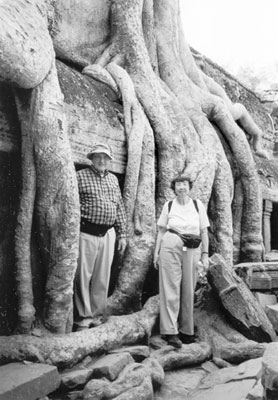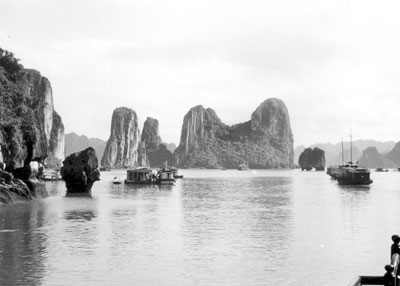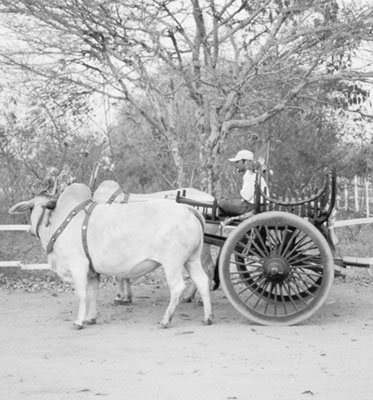Vietnam, Cambodia, Laos and Burma with Ceylon Express International
The two of us took a private, customized trip to Viet-Nam, Cambodia, Laos and Burma, Feb. 13-March 16, ’03, arranged through Ceylon Express International (9542 Dumbreck Dr., Huntington Beach, CA 92626; phone 800/423-9566, e-mail info@ceylonexpress.com). They used Indochina Services as the ground operator.
For both of us, the cost of our 32-day trip, including international air, eight flights between the four countries and everything else except lunches and tips to the guides, was $12,725 — about $225 per person per day (discounting the overseas air travel days). Visas cost a total of about $200. Except for Burma, for which we had to arrange visas ahead of time through the embassy in Washington, D.C., visas were purchased on arrival in each country.
Here are just a few highlights of our trip.
In VIET-NAM, the historic trading port Hoi-An is a UNESCO World Heritage Site. We stayed at the Victoria Hoi An Resort (phone 84 0510 927040), located on the ocean, which was a treat. Rooms cost $150-$170.
We flew to Ho Chi Minh City where the Cu Chi Tunnels, a boat trip on the Mekong River and the War Remnants Museum were interesting.
From Ho Chi Minh City we flew to Siem Reap, CAMBODIA. The highlights, of course, were Angkor Wat, Angkor Thom, Banteay Srei, Bayon and Ta Prohm.
In LAOS, the National Museum in Luang Prabang, a folklore show and visits to numerous Buddhist temples were the highlights. The Pak Du Caves were very disappointing, but the boat ride to get there was great.
If someone wanted to bypass one of the countries we visited, we’d suggest Laos.
In BURMA, the most interesting place in the capital was the Shwedagon Pagoda. From Yangon we flew to Heho, then drove to the shore of Inle Lake. We spent seven hours the next day in our own open boat, touring various villages along the lake where the locals do handicrafts, including silk weaving, paper making, blacksmithing, lotus plant weaving (producing a very expensive material similar to linen), boat construction, cigar making, etc. Of great interest were the fishermen who each propel their small boats with one leg.
Bagan has to be seen to be believed. Everywhere you look, the area is dotted with thousands of 800- to 1,000-year-old temples and stupas of all sizes. Of modern interest is the National Museum, located in a magnificent new structure. It contains many Buddhas taken from the temples, costumes from the different states, paintings and more.
Our final visit was to Mandalay. We saw what was to have been the tallest zedi (stupa) in the world, the Mingun Paya. Work was started in 1790 and halted in 1819, and the structure was reduced to a pile of rubble in an earthquake in 1838. The Mingun bell, cast to go with the stupa, weighs 90 tons. Later we went to watch the sunset from the old teak U Beins Bridge.
On our tour there were no problems with any of the aircraft, at any of the hotels or with our itinerary. Our tour guides, drivers and cars all were good. The guides were always open to our suggestions. We did not encounter any hostility because we were Americans, nor did we see any military or civil disturbance. This is a trip for able-bodied travelers.
WAYNE & DARLENE SCHILD
Austin, TX



